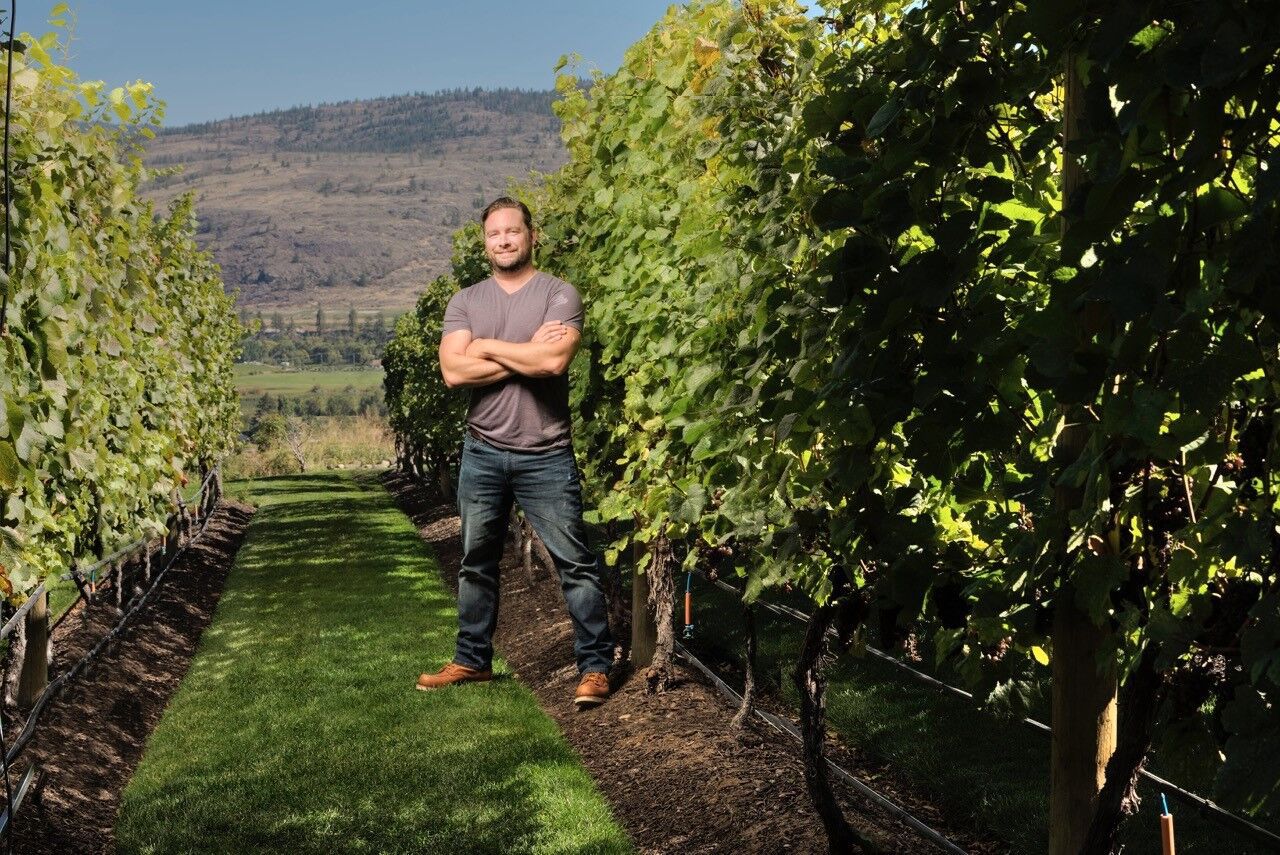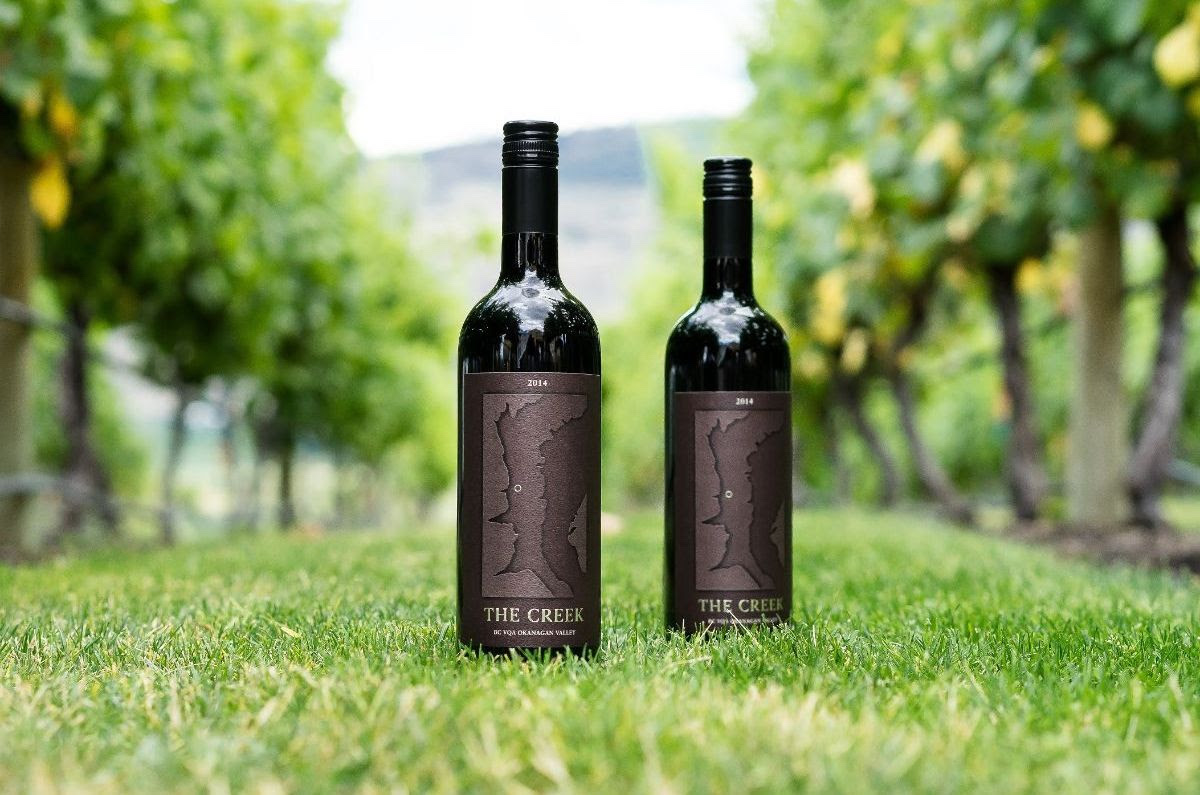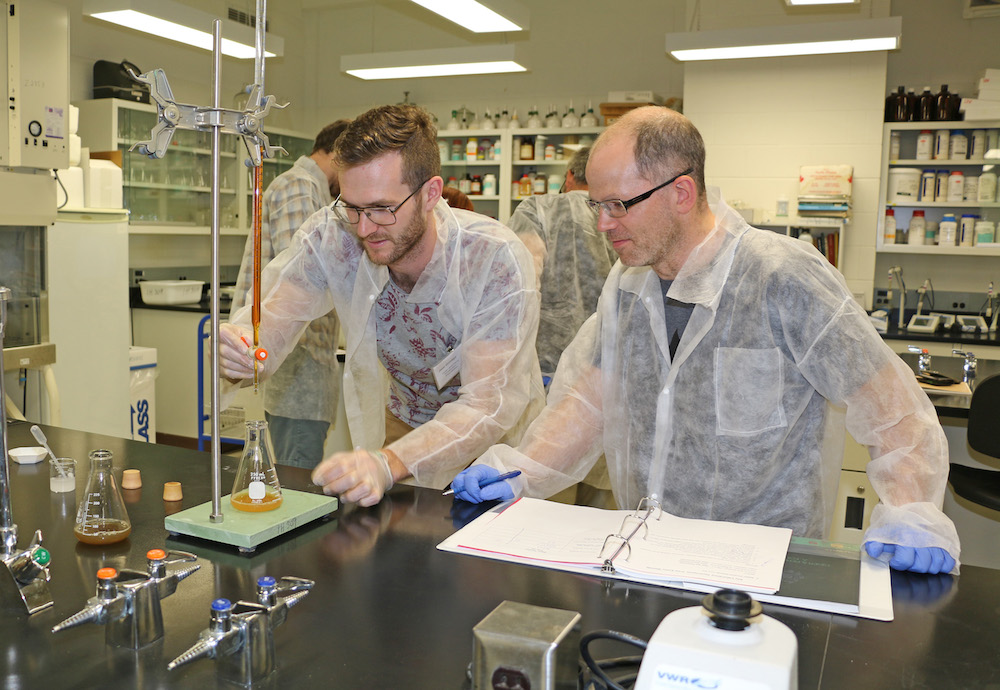
By Rick VanSickle
Tinhorn Creek Vineyards on the Golden Mile Bench in the Okanagan Valley has always farmed with passion and conviction and it just made sense that that is reflected in the wines made there.
Founded by Kenn and Sandra Oldfield and Bob and Barb Shaunessy in 1993 with a focus on growing the best grapes and making great wine, that philosophy continues under new owners Andrew Peller Ltd.
The founding families’ vision and passion is shared by the team at Tinhorn; to be responsible stewards for the land, the people, the community and the future.
On the winemaking side it’s viticulturist Andrew Moon and winemaker Andrew Windsor (below) who are tasked with maintaining a solid portfolio and expanding the boundaries with new and different wines for consumers.

The pair draw from two crucial microclimates in the Okanagan — the South Okanagan’s Golden Mile region with 50 acres at the estate’s Tinhorn Creek Vineyard and 100 acres on the Black Sage Bench at the Diamondback vineyard.
The Tinhorn Creek Vineyard on the west bench gives the vines front row seating to the sunrise and sweet morning light – Gewürztraminer and Muscat love it. Across the valley, the Diamondback Vineyard soaks up the heat and those intense afternoon rays – the Merlot and Cabernet Franc couldn’t be happier.
In recent years, Tinhorn has expanded its core portfolio to include Oldfield Reserve wines, the top-end The Creek and in 2017 introduced the micro-lot Innovation Series. These experimental wines highlight new or different techniques Windsor and Moon are testing in both the cellar and the vineyard.

This year the winery will release a 25th anniversary traditional method sparkling wine (2016) made from 100% Pinot Noir, a ripasso-style rosé (Chardonnay passed through Pinot Noir skins), and whole cluster pressed Cabernet Franc 2016 (reviewed below).
Says Windsor: “Stems impart their own unique flavours, as well as more tannins and structure. How well this works depends on how ripe the stems get. I know that might sound weird, but when grapes are picked early, the stems can still be green and rubbery, and those under-ripe stems bring more green, vegetal and herbal notes.
“Leave the grapes on the vine for a while longer and the stems lignify, or turn brown and woody, and the flavors they add turn a bit more mellow and spicy, more toward black tea, floral or forest floor notes.”
As micro-lot wines, the Innovation Series will be featured at Miradoro, the onsite restaurant, at winemaker dinners and seminars plus available at a few handpicked, top restaurants in western Canada.
I tasted the whole cluster pressed Cab Franc, plus some core wines and Oldfield Reserve vines. Here’s what I liked.
Note: Also in the this report, two new Pinot Noirs from Chateau des Charmes in Niagara, Brock University ups its cider education, and Niagara wines being released at Vintages stores Saturday.
Tinhorn Creek wines

Tinhorn Creek Innovation Series Whole Cluster Cabernet Franc 2016 ($45, 93 points) — The grapes were hand harvested and fermented whole cluster (no crushing or destemming) in open top fermenters and allowed to ferment naturally (no added yeast) for 25 days. The whole berries and clusters go through a partial carbonic fermentation (void of oxygen) creating a unique flavour profile and texture. As the yeast must work harder to get to the sugar inside the berries these fermentations typically are cooler and are much less vigorous, leading to a long, slow, gentle extraction of colour, tannin and flavour. The wines were then pressed and racked to French oak barrels for malolactic fermentation and aging. It was then aged in barrel for 16 months before racking, fining and minimal filtration. Such a beguiling nose of strawberry patch, bramble, black cherries, cranberries, savoury spices, black tea, mulled herbs and intriguing undergrowth. It has a rustic, uninhibited feel on the palate with evident tannic structure, old-fashioned strawberry jam, chunky black cherries, savoury spice notes, juicy fruits from start to finish and altogether a gulpable CF perked up by racy acidity. A charming and seemingly au naturel Cabernet Franc that lays bare its attributes for all to taste. Bravo!

Tinhorn Creek Chardonnay 2017 ($21, 89 points) — The hand-harvested fruit is whole cluster pressed into French and American oak barrels (30% new) and allowed to ferment naturally. It was aged in a combination of oak, concrete and stainless steel. It has enticing aromas of white peach, tropical fruits, mineral accents and subtle vanilla toast and oak spice. There’s a creamy texture on the palate with clean tropical fruits, apple skin, integrated oak spices and lemon zest on the finish to keep it lively through the finish.

Tinhorn Creek Oldfield Reserve Pinot Noir 2014, Golden Mile Bench ($35, 91 points) — One batch of the grapes for this Pinot was fermented in small open top fermenters with 30% whole cluster grapes allowed to ferment naturally. The second was destemmed and fermented in closed top tanks with selected yeast. The wine was aged in a small portion of new French oak then aged in bottle for 18 months. It’s a perfectly aged Okanagan Pinot with a nose of dried cherries, strawberry tart, rhubarb, violets and full integrated spice notes. It has a velvety entry that shines a light of the bright red fruits, cran-cherry and anise to go with dried herbs and elegant spice notes through a frisky, finessed finish. Top-drawer Pinot.

Tinhorn Creek Merlot 2016 ($24, 91 points) — Grapes were destemmed and partially crushed, leaving some whole berries. It was then fermented in both closed and open top fermenters and allowed to ferment naturally with no added yeast. The wines were then pressed and racked to oak barrels, a mix of French, American and Hungarian oak, for malolactic fermentation and ageing for up to 14 months. The nose shows perfumed crushed red berries, bramble, forest berries, plums and lovely spice notes. It’s approachable and yummy on the palate with overt red berries, cocoa, baking spices and resolved tannic structure leading a long finish. Highly drinkable now, but can also cellar 3+ years.

Tinhorn Creek Oldfield Reserve Merlot 2015 ($29, 92 points) — The fruit was sourced from the estate’s highest elevation site on the Black Sage Bench Diamondback vineyard where the berries tend to be smaller and lower yields are natural. The grapes are destemmed and partially crushed, leaving some whole berries and pumped to stainless steel tanks for fermentation which we then allowed to ferment naturally with no added yeast. The wines are then pressed and racked to French oak barrels for malolactic fermentation and ageing for 18 months. This is a richer fruit-laden Merlot, with more concentrated and complex notes of black cherries, wild raspberries, cassis, licorice, integrated herbs and elegant oak spices. It is rich and savoury on the palate with thick red fruits, some black currants, espresso, vanilla bean and polished tannins all leading to a finessed and long finish.

Tinhorn Creek The Creek 2015 ($55, $120 for magnums, 92 points) — The blend for this flagship wine is 53% Cabernet Sauvignon, 19% Merlot, 17% Cabernet Franc, 9% Malbec and 2% Petit Verdot. The fruit predominantly comes from the highest elevation site on the estate’s Black Sage Bench Diamondback vineyard with only the Petite Verdot and Malbec sourced from the Golden Mile Bench. The grapes are destemmed and partially crushed, leaving some whole berries and pumped to stainless steel tanks for fermentation, which is then pressed and racked to 40% new French and Hungarian oak barrels for malolactic fermentation and ageing for 24 months. It has a robust, heady nose of thick black currants, juicy blackberries, dark plums, flecks of crunchy red fruits, mocha, elegant spice notes and sweet tobacco. It has a spicy bite on the palate with a range of concentrated dark fruits, kirsch, plums, raspberry preserves, vanilla bean, dark chocolate, subtle earthiness and a big, long finish. Top notch wine here that call cellar 15+ years.
Two Pinots from
Chateau des Charmes

Chateau des Charmes Estate Pinot Noir 2017 ($17, 88 points) — Even at this affordable level, Chateau des Charmes shines a spotlight on personable and Niagara-bred Pinot Noir. Never heavy, always on point, the Chateau des Charmes way is to let the fruit do all the talking. What is says here on the nose is fresh strawberries, cherries, damp forest floor and underlying bramble notes. It’s medium-bodied on the palate with juicy red fruits, a touch of cassis, earth and lots of finesse and freshness through the finish. Great value for Pinot at this level
Chateau des Charmes Paul Bosc Estate Vineyard 2016 ($39, 92 points) — The estate Paul Bosc Vineyard has always delivers a satisfying Pinot experience. Such a gorgeous nose of wild raspberries, summer cherries, bramble and integrated spice and minerality. It’s rich on the palate, with fine-grained tannins that yield a range of field strawberries, raspberries, beetroot, underlying earthiness and spice. Lovely textbook Niagara Pinot.
Brock expands cider
certificate course offerings

Brock University’s Cool Climate Oenology and Viticulture Institute (CCOVI) continues to lead the way for the booming cider industry with the launch of the Advanced Certificate in Cider and Perry Production.
The advanced-level courses were unveiled Feb. 7 by the Cider Institute of North America (CINA) at CiderCon, an annual industry conference being held in Chicago. Brock University joined other CINA program providers, including Cornell and Washington State universities, in making presentations.
The addition of the advanced courses builds on Brock’s offering of CINA’s Foundation Certificate in Cider and Perry Production offered each year by CCOVI.
“Brock University is thrilled to bring the CINA program to the Canadian market and be a key player in driving the industry forward,” said Barb Tatarnic, CCOVI’s Manager of Continuing Education and Outreach. “As a program provider of the Foundation and now the Advanced level of certification, this is a critical step in setting widespread industry standards for the rapidly growing cider and perry industry.”
In addition to being the only Canadian provider of the CINA courses, CCOVI also provides analytical testing services to help cider makers deliver the best product possible.
“Brock played an instrumental role in developing the courses of the Advanced Certificate program, which is the first educational accreditation for cider makers in North America,” said Steven Trussler, the CINA-certified instructor in CCOVI’s cider program. “It builds upon the foundation certificate with a comprehensive program that is intended to take about three years to complete.”
To date, around 100 students have earned the Foundation Certificate in Cider and Perry Production through CCOVI.
Brock University will offer the following advanced-level courses: Science and Practice of Cider and Perry Production; GMP, Safety and Sanitation of Cider and Perry Production; Essential Sensory Analysis of Cider and Perry; and Essential Laboratory Testing of Cider and Perry.
Note: Information on Brock’s new cider course was provided to Wines In Niagara by the university
Released at Vintages on Saturday
• Lundy Manor Vidal Icewine 2016 ($45 for 375 mL
• Marquis The Silver Line Chardonnay (no vintage specified, $18)
• Henry of Pelham Estate Riesling 2017 ($20)
• Leaning Post The Fifty Chardonnay 2016 ($23)
• Featherstone Red Tail Merlot 2017 ($20)
• Marquis The Silver Line Pinot Noir (no vintage specified, $18)
• Thirty Bench Winemaker’s Blend Double Noir 2016 ($23)
• Vieni Pinot Noir 2015 ($17)






Comment here